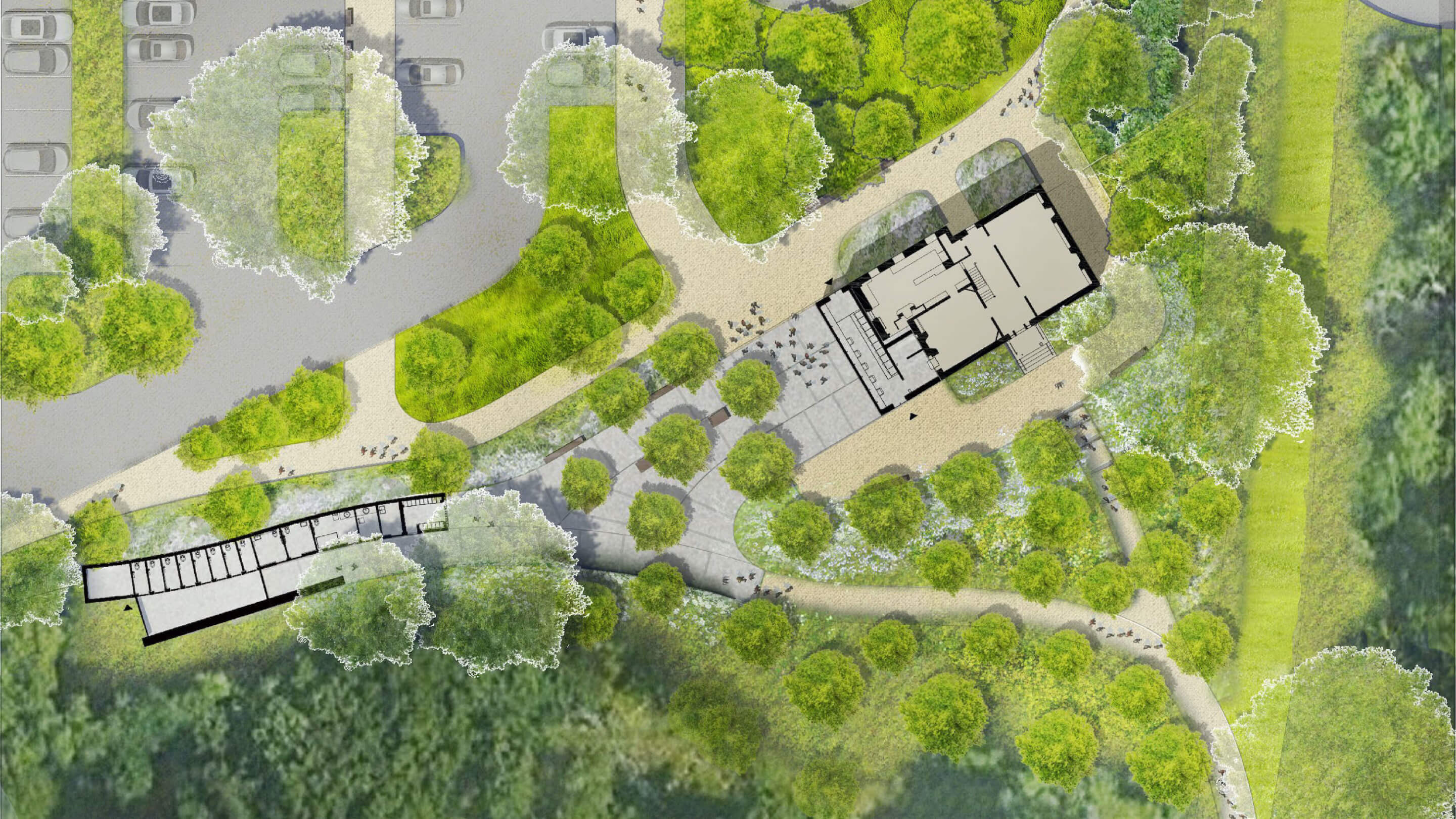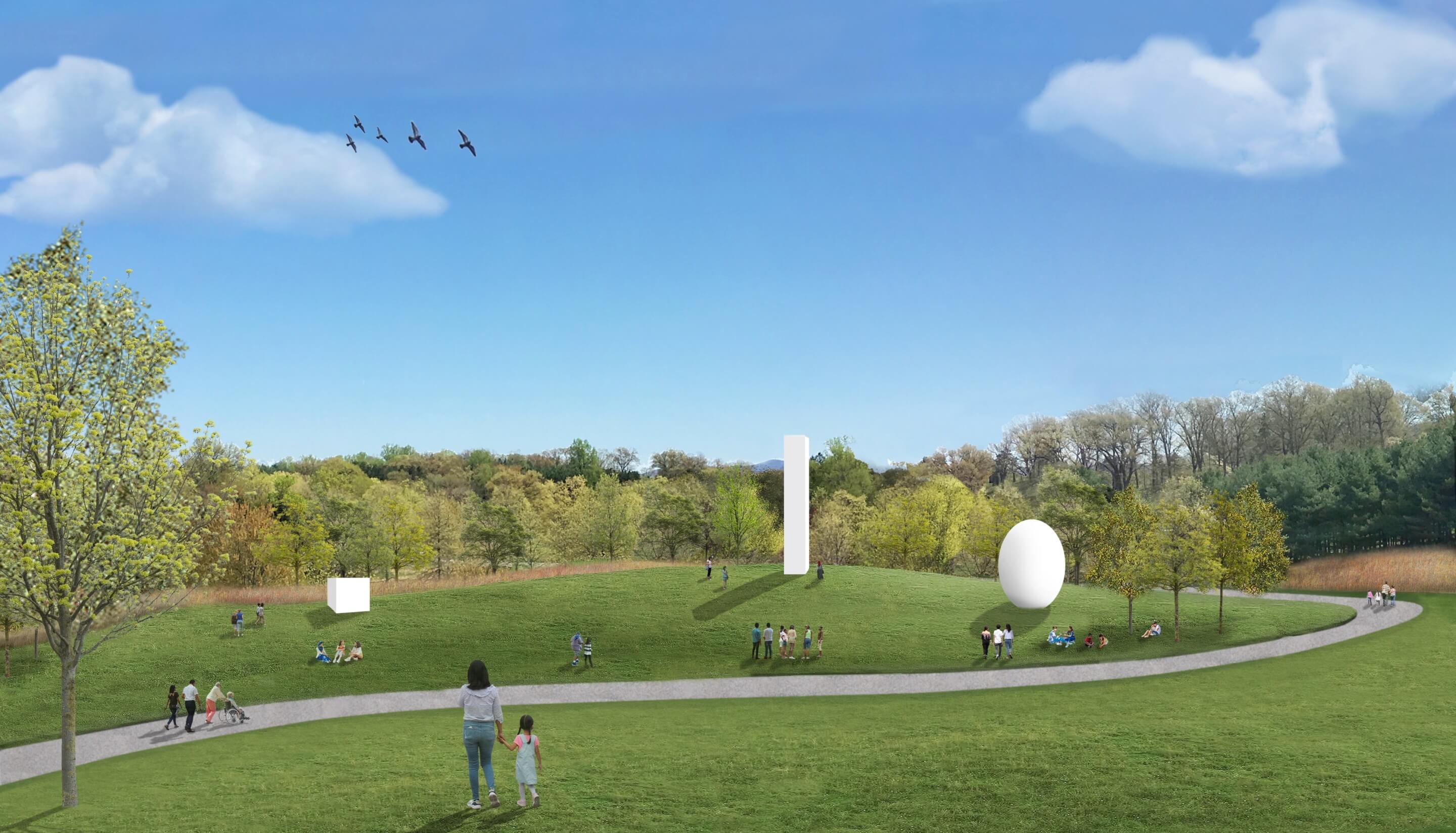Storm King Art Center taps powerhouse international team for $45 million capital project
Storm King Art Center has announced that it will embark on a $45 million refresh of its renowned open-air museum spanning 500 acres of mountain-flanked forest and meadow in New York’s Hudson Valley. The capital project will bring a host of new features and upgrades—accessible visitor pavilions, a relocated parking lot, infrastructural improvements, and a Conservation, Fabrication, and Maintenance Building among them—to the sexagenarian sculpture park so that it can better accommodate continued growth. As noted in a press release, a “tremendous increase in visitation and programming” spurred an urgent need for capital improvements that “prioritize the visitor experience and advance the Art Center’s leadership in landscape stewardship and environmental sustainability.”
“This ambitious capital project enriches the absolute best things about Storm King while helping chart our path to a more sustainable future,” elaborated Storm King President John P. Stern in a statement. “It allows us to advance all areas of our work and mission; to support our growing community of visitors, artists, and staff; and to preserve our extraordinary site and collection for future generations.”
With work slated to commence later this year, Storm King has assembled a formidable team of global firms to helm the design of the ambitious undertaking including heneghan peng architects, in what is the first stateside project for the Dublin-based firm, along with New York’s own WXY architecture + urban design and a powerhouse pair of landscape architecture practices: Cambridge- and New Haven–based Reed Hilderbrand and the London-based Gustafson Porter + Bowman.
Amy S. Weisser, Deputy Director of Strategic Planning and Projects at Storm King, noted that “while each of four firms brings a distinct toolbox of expertise, their collective approach is grounded in a shared set of values which aligns with Storm King’s.”

“They have a similar deference to art and nature and dedication to being in and of the outdoors, to creativity and collaboration, to care for people and nature, and to building sustainable infrastructure,” she added.
The $44.5 million capital campaign first kicked off in 2017, with $43.5 million being raised to date. Just today, Storm King launched a public fundraising effort to help take the campaign over the finish line. New York State has also demonstrated its largesse, providing $2.6 million in support. (State funding includes $2 million from the Empire State Development as recommended by the Mid-Hudson Regional Economic Development Council plus an additional $600,000 from the New York State Energy Research and Development Authority through its Carbon Neutral Community Economic Development program.)
As detailed by Storm King, a trio of core values—A Gracious Arrival, Support for Artistic Vision, and A Sustainable Future—have been established to guide the design.
On the A Gracious Arrival front, Storm King tasked the design team to conceive a series of pavilions featuring “essential” visitor amenities including restrooms, gathering spaces for large groups, and more. Linked to the main grounds via accessible pathways, the pavilions will flank a newly created consolidated parking area at the edge of the site. (The current parking areas will be transformed into new landscapes for art.)
“Storm King is very much a living landscape, and our light-touch design approach maintains the focus on art in the landscape. The landscape and art remain the protagonists, with supportive, rather than competing, architectural elements,” elaborated Claire Weisz, founding principal of WXY, in reference to the visitor pavilions. “Every structure is porous, designed to support visitor movement and exploration of Storm King’s different environments while opening up multiple sight lines.”
As for the new parking area, it will include dedicated areas that accommodate public transportation in an effort to minimize the relatively remote sites’s transportation-related carbon footprint while rendering the campus “more accessible to those without a personal vehicle.” There will also be a dedicated drop-off area for school groups adjacent to an orientation pavilion.
Joining the suite of new pavilions will be the purpose-built Conservation, Fabrication, and Maintenance Building. Located at the southern edge of Storm King’s sprawling campus and envisioned as a “venue for creative collaboration,” the flexible, multifaceted facility will act as a workshop, studio, mechanical shop, storage space, and office. In addition to serving as a conservation space for the museum’s world-class collection of existing sculptures, new works will be created and fabricated at the building.

On that note, the project includes the creation of new art-ready landscapes including, as mentioned, at what is now the existing parking areas at the north and south of the site. The parking lot reclamation effort will “naturally extend existing exhibition spaces while providing a platform for exhibitions, temporary installations, and public programming, as well as revealing additional sight lines of Storm King’s forested edge.”
Myriad sustainable design strategies and local ecology-benefiting elements will be incorporated throughout the project, including at the LEED Gold-targeting pavilions and with the landscape itself, which will receive more than 650 new trees.
“It’s exceptionally rare for landscape to be treated as seriously as art, as it is at Storm King. The environment at Storm King allows people to appreciate that they have a relationship to the land, invites them to imagine caring for it and appreciating that it changes, just as they do,” said Beka Sturges, principal of Reed Hilderbrand. “We thought deeply about how to make the woods, wetlands, and overall biodiversity of the grounds a more inherent and exciting part of the experience, especially how it can support people’s encounters with the art. This includes planning for greater diversity of plant species—varying heights, textures, shapes, and groupings, which reward intimate viewings as well as long views.”
Work on the capital project is slated to wrap up in 2024. AN will circle back with a more in-depth look at the design as this transformative, collaborative effort unfolds.
